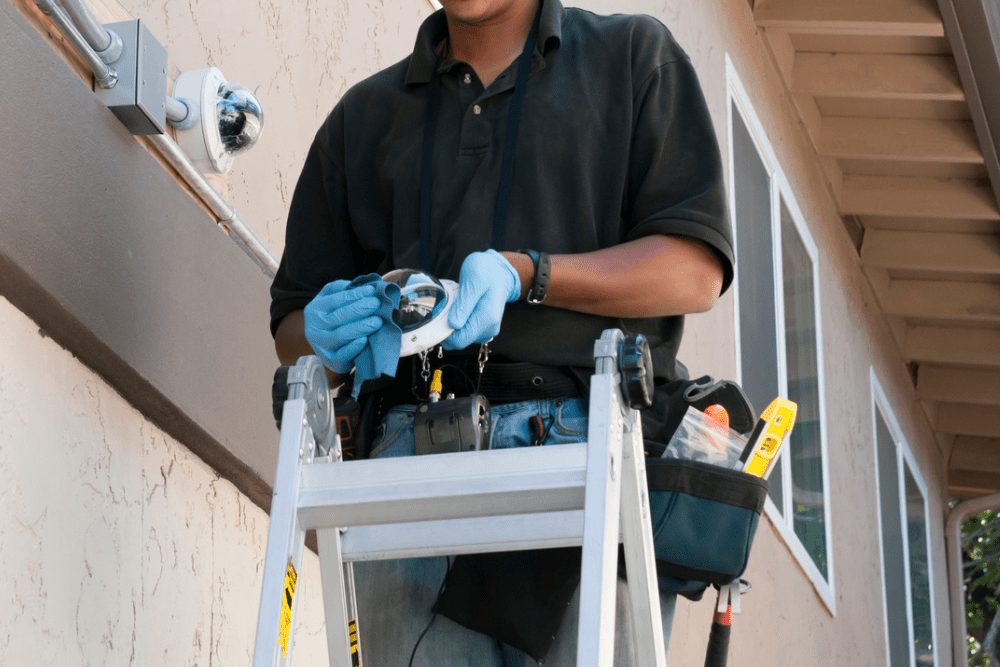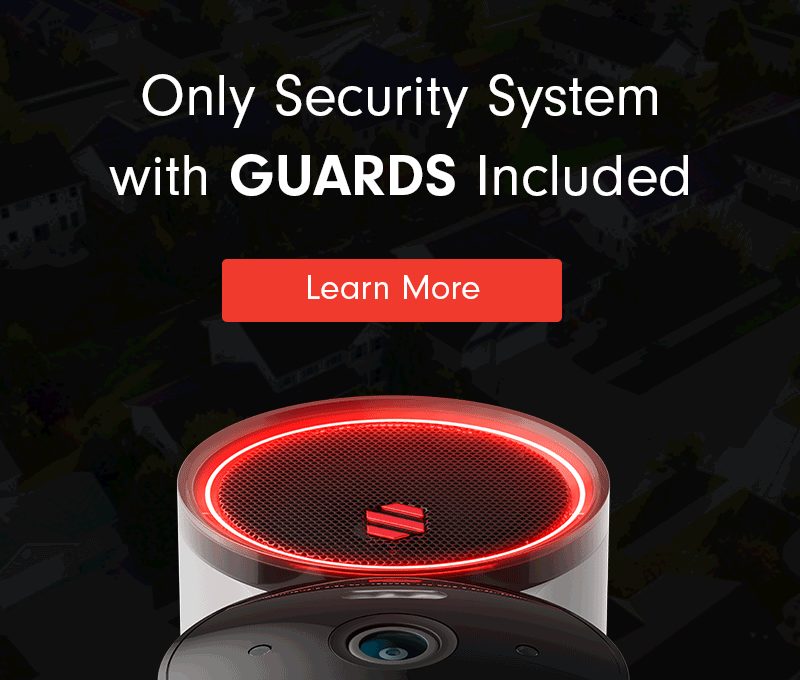Basic Security Camera Troubleshooting Tips

Security cameras are great tools, but only if they’re set up properly and work when you need them to. An unreliable camera is almost as bad as no camera at all. Let’s break down the most common issues folks have and how to avoid them with simple security camera troubleshooting tips.
Security Camera Troubleshooting: The Essentials
Power
Your camera has to have power. This may seem like common sense, but it’s surprisingly easy to forget. There are hundreds of stories of folks requesting IT help, only for the technician to show up and press the power button. So, start with the most basic security camera troubleshooting step: ensuring your system has power.
Is it plugged in? Is the circuit operational? If the camera uses a battery, is the battery charged? Most cameras will have a light to let you know when the camera is receiving power and recording. This is also a good time to check wires and make sure they’re undamaged and securely plugged into the right ports. Check your user manual for specifics.
Internet
Many security cameras use a Wi-Fi connection. Make sure your router is close enough to the cameras that they’re getting a strong connection. This might mean that you have to relocate your wireless router. For particularly large properties, consider supplementing your network with a Wi-Fi range extender. (This is one of several helpful security camera accessories available on the Deep Sentinel website.)
If you check the power, wired connections, and internet and still find that your camera doesn’t connect to the hub, there might be interference. Consider relocating your security devices if they’re near any of these common signal blockers:
- Unusually thick walls or ceiling
- Brick, concrete, or stone
- Glass (including mirrors)
- Ceramic (e.g. tiled surfaces in a kitchen or bathroom)
- Large electrical appliances (e.g. refrigerators, TVs)
- Metal objects (e.g. shelving, tables, desks)
- Large bodies of water (e.g. fish tank, water heater)
Software
Does your camera have the most up-to-date software? Especially if you’re using smart devices, having the current software is vital for your camera to transmit data. You may even need to do some updates as soon as you plug in the camera for the first time. And if your camera connects with a mobile device, check for app updates in your app store.
Still wondering, “Why is my security camera not working?” With these basics well in hand, let’s make sure you configured your system correctly in the first place.
Camera Set-Up Tips
Can the camera can “see” what it needs to? It’s more than just the security camera’s field of view. If a camera isn’t aligned properly, the motion sensor may not work, which means the camera won’t record at all. To avoid problems, use these guidelines.
- Aim: Your camera should cover major points of entry, such as the front door, back door, and driveway. Try to find an angle that will maximize the amount of “open air” in the frame without a wall, corner, or ceiling blocking the view. Although many homeowners point their front door camera toward oncoming visitors, you’ll be able to capture a better picture by mounting the camera away from the front door and aiming it at the entryway.
- Height: Your camera should be high enough to prevent tampering and interference. We recommend 6-8 feet high, but if you’re still having issues, try going higher.
- Indoor/outdoor use: Certain cameras are appropriate for certain functions. Are you trying to use an indoor camera (without weatherproofing) outside? Does your monitoring service only permit indoor or outdoor use? Is the temperature too extreme for the camera to operate? Make sure you choose the right camera for your chosen location.
- Motion sensor: Many cameras are motion-activated. Depth perception is tricky for a motion sensor. Set your security camera up so that most movement will be side-to-side, rather than toward or away from the camera.
- Debris and obstacles: Be aware of the things that can get in the way of the camera’s view. This could be hanging decorations like holiday lights or flags or as simple as tree branches and cars. Remove any obstacles that you can or reposition your cameras as necessary.
For information and helpful graphics, see our camera positioning guide.
Hub Set-Up Tips
If your camera system came with a hub, your hub is the center of your network. Without proper placement, you may experience problems with your video uploads or camera functionality. Here are a few tips for placing the hub in your home.
- Central location: Your hub needs access to all of your cameras. Every home and every installation is unique, so there isn’t one “best” hub location. Try to find a spot that is roughly equidistant from every camera in the system. Keep in mind that walls, ceilings, and other obstacles may affect the Wi-Fi signal. If possible, try to keep at least 6.5 feet between each camera to avoid interference the cameras might have with each other.
- High elevation: Because your cameras are elevated off the ground, your hub should be elevated, too. A second floor or attic might be ideal. Avoid putting the Hub on the floor in a garage or basement. Even placing it up on a table will help.
- Avoid large appliances: Many appliances these days connect to the internet, from toasters to washing machines. In some cases, these smart appliances can cause interference between your camera and the central Hub. If possible, avoid having these appliances too close to your hardware.
For a more in-depth look at hub positioning, check out our full hub positioning guide.
With these tips, you’re ready to set up your camera to monitor and record whatever might be going on at your property.
Prevent Common Issues with High-Quality Security Cameras
What’s the easiest way to avoid security camera troubleshooting? Start by buying the best cameras on the market.
Deep Sentinel’s cameras solve your most pressing security camera woes. They’re weather resistant for outdoor use. And if you have a large property or experience extreme temperatures, we have security camera accessories for that, too. You can mount the cameras in nearly any configuration you need to get a great view. Choose from a wireless security camera system or PoE camera system, depending on your needs. (Bonus: PoE systems don’t rely on your Wi-Fi signal!)
Our support goes beyond the camera system itself. When you purchase cameras from Deep Sentinel, expert team members will help you with the details. We’re with you every step of the way, from calculating the right number of cameras to testing that our live video monitoring guards can see and hear your property. And if you prefer professional installation, a certified local installer from our nationwide network would be happy to assist you.
Get started with Deep Sentinel by calling 833.983.6006.
Need a Solution that Prevents Crime?
Deep Sentinel is the only security technology that delivers the experience of a personal guard on every customer’s home and business. Visit deepsentinel.com or call 833-983-6006

